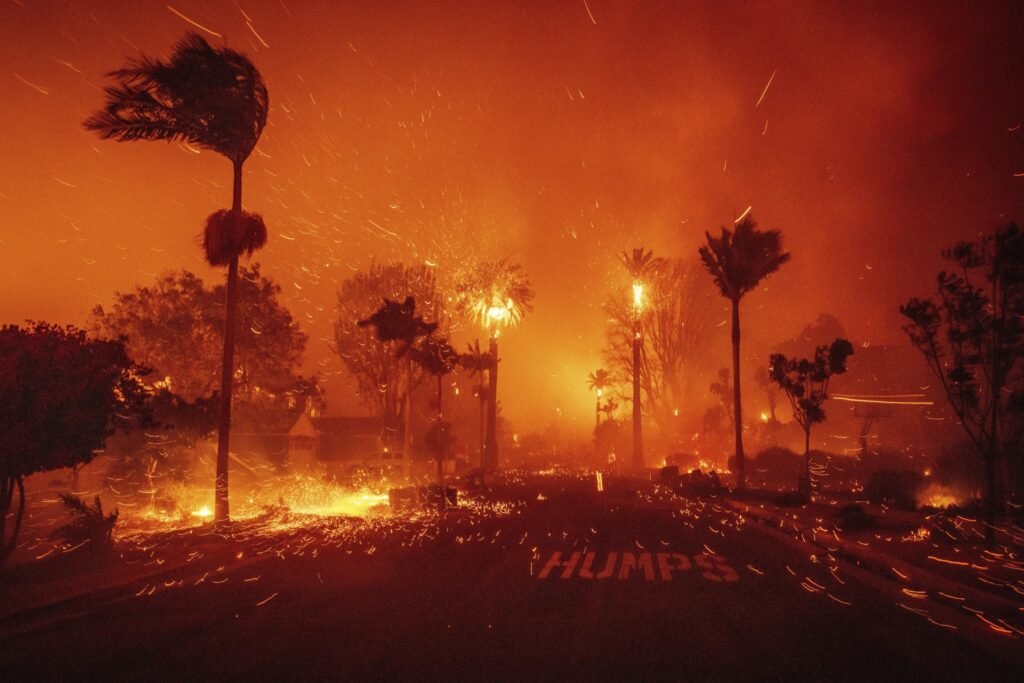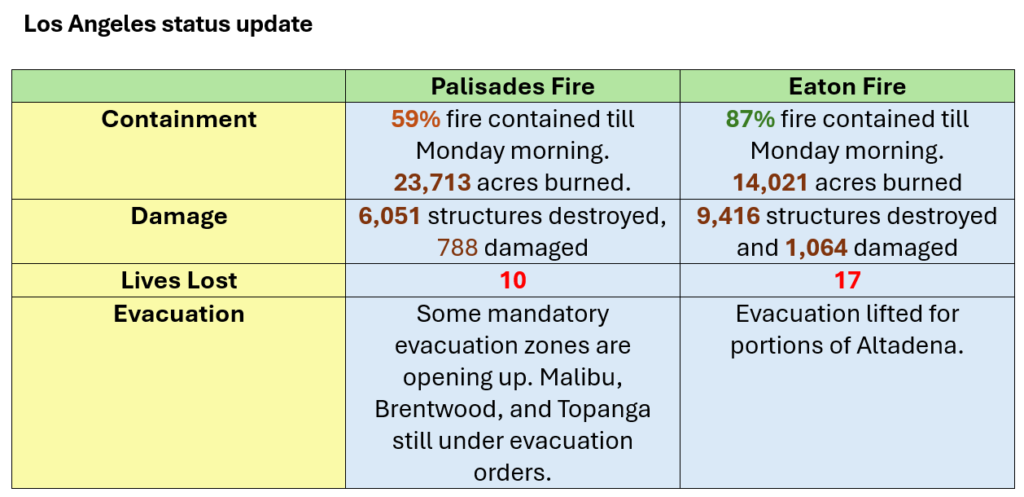Reported by: Ujaan Roy Choudhury, Edited by: Soumik Dey
With bone-dry vegetation and forecasts of strong Santa Anna winds, meteorologists have warned that small blazes could turn into massive infernos in this weather. This would be the fifth time the National Weather Service has sounded the alarm this season, warning of acute fire conditions. The warning is for a “particularly dangerous situation” that will last through Tuesday morning for Los Angeles and Venture counties.
 The Los Angeles fire has been raging for several days, driven by strong winds and dry conditions, making firefighting efforts extremely challenging. The fire, which started in the city’s hills, has spread rapidly into urban areas, impacting thousands of residents and yet to be tamed.
The Los Angeles fire has been raging for several days, driven by strong winds and dry conditions, making firefighting efforts extremely challenging. The fire, which started in the city’s hills, has spread rapidly into urban areas, impacting thousands of residents and yet to be tamed.

Peak gusts of 50 mph to 70 mph are possible along the coast and valleys. Sustained winds are expected to be between 25 and 40 mph. Isolated gusts up to 100 mph are likely in the mountains and foothills. In comparison, sustained winds are expected to be between 30 and 50 mph, said Rose Schoenfeld, a meteorologist with the National Weather Service office.  Local authorities have issued mandatory evacuation orders for numerous neighborhoods near the affected areas, particularly in the northern and eastern parts of the city. Flames have destroyed several homes, businesses, and structures. Thousands of people have been displaced, and shelters have been set up across the city to provide refuge.
Local authorities have issued mandatory evacuation orders for numerous neighborhoods near the affected areas, particularly in the northern and eastern parts of the city. Flames have destroyed several homes, businesses, and structures. Thousands of people have been displaced, and shelters have been set up across the city to provide refuge.

Local authorities had issued mandatory evacuation orders for numerous neighborhoods near the affected areas, particularly in the northern and eastern parts of LA. The flames have already destroyed several homes, businesses, and structures. Thousands of people have been displaced, and shelters have been set up across the city.
Firefighters, assisted by aircraft, including helicopters and planes, continue to work around the clock to contain the blaze. The fire has grown unprecedentedly due to high winds and low humidity, creating what experts call an “extreme fire behavior” situation. Local, state and even national firefighting teams have been deployed in a coordinated effort to slow the fire’s spread.

The air quality around LA has worsened dramatically due to the heavy smoke blanketing large parts of the city. Hospitals are seeing a significant increase in patients with respiratory issues, especially those with pre-existing conditions like asthma. Health authorities have issued advisories for residents to stay indoors and wear masks if they must go outside.
The fire has devastated large areas of California’s natural landscape, including local wildlife habitats. Experts are concerned about the fire’s long-term effects on the environment and local ecosystems, particularly the loss of vegetation that stabilizes soil and prevents erosion.












